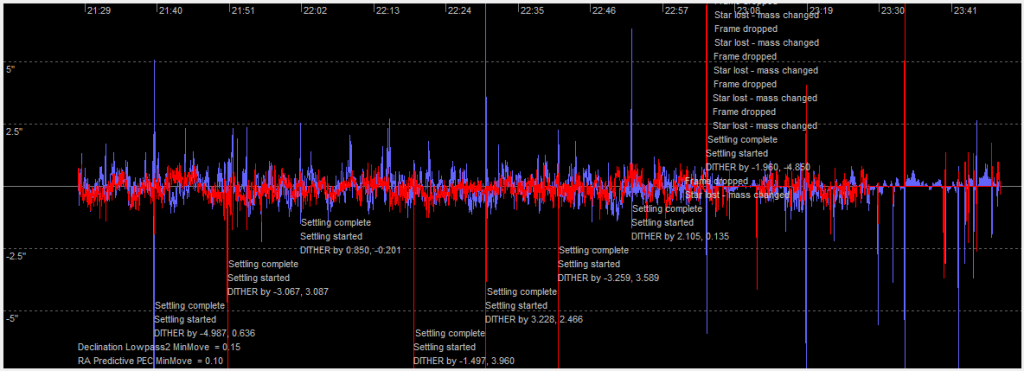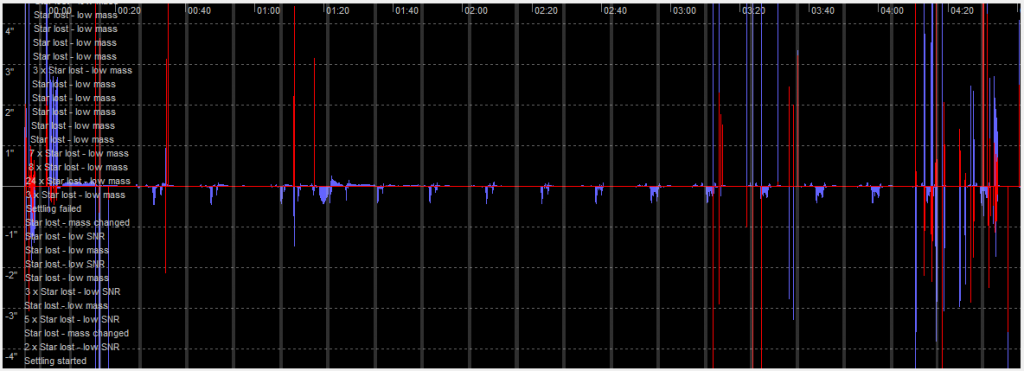
Finally–after a summer of clouds and smoke, I was able to take advantage of the clear nights that we start to see in autumn here in the mountains of Colorado. I’d been chomping at the bit to capture some new data and was happy to begin with the Cygnus Wall. Right from the start, it was a challenging evening, but this result at least was worth it.
I had previously been experimenting with imaging galaxies using my Celestron NexStar 6SE optical tube on my iOptron GEM45 mount, with mixed results. This time it was back to the Sky-Watcher Esprit 100, a fabulous 4-inch apo refractor I’ve come to love. The transition back was not without its pain, though–the focus was initially off and I spent quite a bit of time achieving sharp focus (to the extent that I threw away the first dozen subs I took). Tracking was good to start off the evening, though, and the moon had not yet risen by the time I started capturing subs at 9:30 PM local. Using N.I.N.A, I set up the evening’s imaging run, monitored for a while, and then went to bed, hoping that morning would bring 120 good 3-minute subs. I noticed that the waning gibbous moon was just rising as I climbed into bed.
The morning’s results were disappointing, to say the least. A review of the PHD2 logs showed that PHD2 started having trouble seeing its guide stars not long after I went to bed, and by the time the meridian flip occurred just before midnight, the images had become unusable.


Many of the individual subs came out looking like this:
I hypothesize that the rising of the moon washed out the sky enough that the guide stars previously chosen by PHD2 became difficult to for it to follow. It also appeared from examining the subs that a few clouds may have passed overhead during the imaging run.
All in all, it was not the imaging run I’d hoped for, but I managed to salvage 30 good subs to produce the image above. I used PixInsight to do the majority of processing, following a YouTube recipe for producing a false-color image using a simulated Hubble palette from lukomatico. I used Affinity Photo and DeNoise AI to put the finishing touches on the image.
UPDATE: It took a couple weeks, but I was able to revisit this target and collect and additional 7 hours of data. The image at the top of the post is the result–8.3 hours of 3-min subs, plus dark, flat, and bias frames. More data is definitely better.

